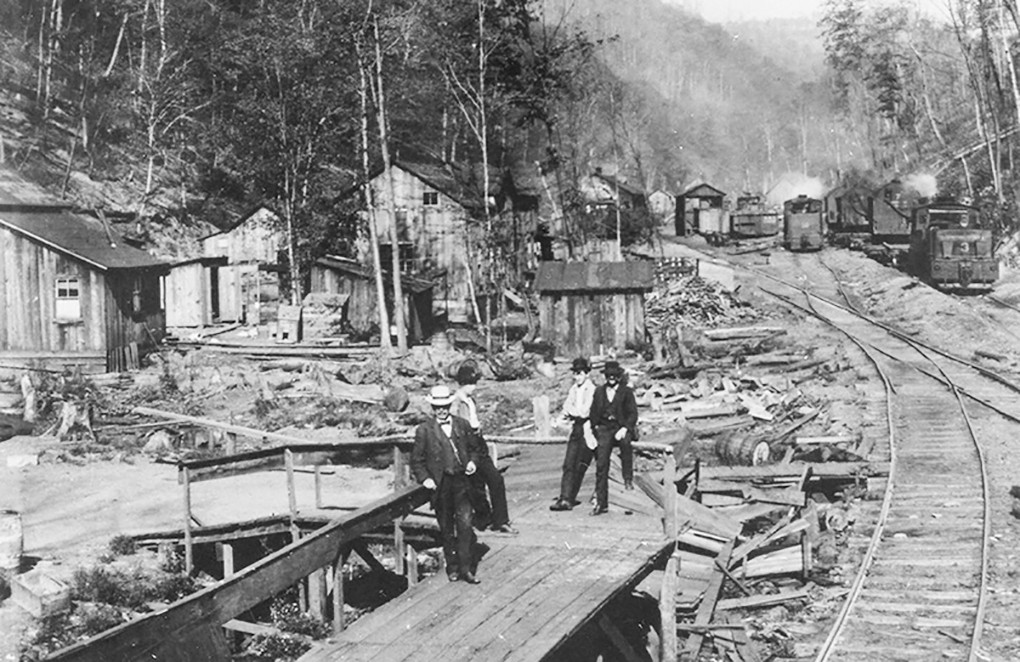South Fork history is laden with lumber

Part 2 of 3
SOUTH FORK- To celebrate South Fork’s history that surrounds the town, a festival was created several years ago to pay homage to the lumber trade that created the community. The Logger’s Day festival is full of entertainment based on the logging industry. In stories of the lumber trade around South Fork, many recount how the lumberjacks had full control over the health of the forest and only harvested trees in areas that needed thinning or for other mitigation reasons.
Back in the early days, loggers used several techniques to cut down dead or dying trees for timber and to transport it to the mill by horse drawn wagons or later by train. Even in those days, the infamous spruce beetle was present and infecting the forest. Knowing this and knowing the repercussions of what would happen if something was not done about the troublesome insect, loggers took it upon themselves to handle the infestation through interesting techniques. Throughout the summer season, the loggers saved the leftover limbs, sawdust, and leaves and put them in slash piles under or near beetle infected trees. The spruce beetles would migrate to the slash piles for shelter during the winter months. Loggers would return to these areas after a few months of biting cold and light the piles on fire. That was the end of the spruce beetles for that year.
One story from the early 1900s tells of two men who almost lost their lives delivering lumber by wagon from South Fork to Silverton. This story is included in the historical documents that are stored in the Rio Grande County Museum.
The two-man crew was hired by a mining company to bring a wagonful of lumber to the mining community by an ox-drawn wagon. The expedition began in early summer and did not end until late fall. The rigorous trail leading up and over the San Juan Mountains was treacherous and only the brave were crazy enough to give it a try.
As the story goes, the expedition made it half-way to their destination before near tragedy caused it to fail. While traveling the narrow trails, one of the oxen pulling the heavy load lost its footing almost causing the wagon and both animals to fall into a ravine and ultimately causing their demise. The nearly tragic event only caused a delay in the lumber delivery, but in the end, the crew made it across the state to Silverton and collected their meager $200. This is one of many tales that surround the small mountain town and helped form the history we know today.
The lumber trade brought people to the area in search of industrial lifestyles, to better their lives and that of the town. Lumberjacks were a rare breed. They were men who could withstand the elements, surviving on the wilderness to supply the lifeblood of the town and their families.
The Chinook Lodge (built about 1908) was the homestead for many of the area’s lumberjacks. It housed their families while they were out in the woods hard at work.
When the lumber mill caught fire, it was the bunkers that faced the most danger. Residents of the Chinook Lodge could not see the flames quickly approaching and they would have been engulfed in flames had it not been for passing travelers sounding the alarm. Large piles of timber blocked the view of the fire, leaving the residents in the bunkers unaware of the coming flames. Entire families were evacuated just in time, as the lumber mill went up in a wall of searing hot flames.
Some in the lumber industry also left the forest bare of trees in several areas. Some knew the secrets to cutting lumber without leaving a footprint on the land, while others cut until there were no trees left on many of the hill sides.
It was due to this denuding that caused the uproar of angry patrons, seeking an end to the lumber industry in South Fork and other areas around the state. Even to this day, guests to the area can see where the lumber companies wiped certain areas clean of trees leaving only scarred tree stumps in their wake.
Later in the 1960s, the Reagan Administration created regulations to halt lumber collection, drying up what made the town a success in the first place.
Many lost their jobs along due to the lumber mill fire and left the area. This caused a slump in the town’s growth and almost causing South Fork to become a ghost town like so many other boom and bust Colorado communities. At the time the sawmill in South Fork was the main source of employment as the mining in Creede and Summitville had begun to slow, which caused a ripple effect in the area’s economy.



